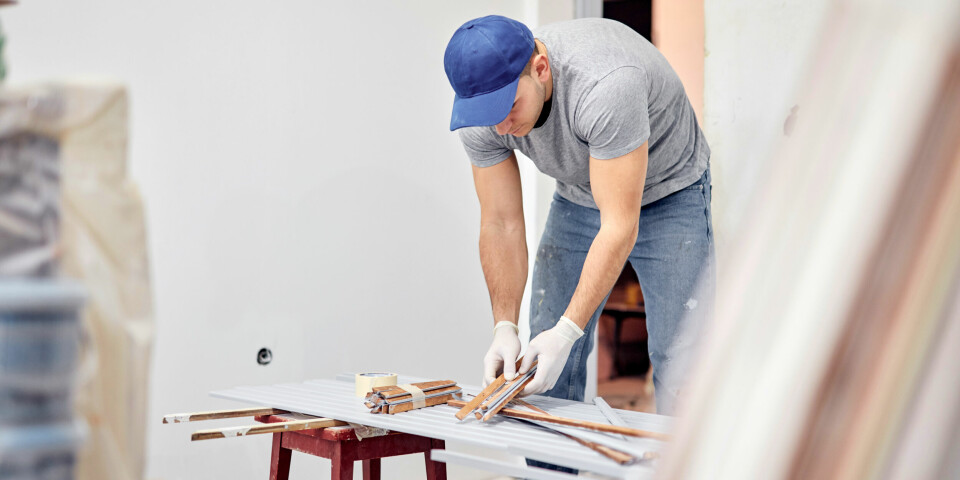-
France santé promises better GP access
The initiative aims to improve GP access and reduce wait times in medical deserts across the country.
-
‘We’re happy to pay new health fee, it's fair’, say Americans in France
Some feel uncomfortable over being singled out for attention by French députés
-
French MPs back plan to make new doctors set up in underserved areas
The controversial bill has been adopted in parliament, but many medical professionals are opposed
My operation in France: Grommets
The inside story of readers who have had operations in France – and how they found the health service, by Gillian Harvey

Mark and Karen Slee came to live in France in 2011 with son Lewis, then two, as they had enjoyed many happy holidays here since Mark’s parents moved in 2001.
They moved to Haute-Vienne after Mark’s building business began to struggle as a result of the economic climate and the family took the opportunity to live in Nouvelle-Aquitaine and give themselves a new start. Mark is now a self-employed builder, and Karen looks after Lewis and his five-year-old sister Letisha.
Here is Karen’s story:
Initial symptoms
Although Lewis was generally healthy, he suffered a lot from sore throats. We also noticed that he did not always hear very well – for example, if we were talking to him from the next room.
We took him for a GP appointment and were told to take him to an ear, nose and throat specialist (ORL - oto-rhino-laryngologiste) in Limoges.
The specialist examined Lewis and told us that he was suffering from “glue ear” – a condition where excess fluid builds up in the middle ear canal and affects hearing.
Although this can often clear up on its own, as Lewis’s symptoms had been going on for some time, the specialist told us that he would need to have grommets – small temporary tubes placed in the ear that help to keep the eardrum open and drain any fluid away.
At the hospital
A couple of months later, Lewis was booked in for the operation at the specialist children’s hospital in Limoges.
As the operation was a day procedure, we arrived in the morning and were taken to a room where Lewis was able to change into a hospital gown.
He was anxious, but the staff were excellent at calming him down.
When they wheeled him off for his surgery, I felt quite panicky. Even though I knew it was a straightforward procedure, it was performed under general anaesthetic.
Like most mums, I was terribly worried about the whole thing.
The operation
Lewis was placed under general anaesthetic to enable the surgeon to insert the grommets – tiny tubes – into the ear drum. The operation took less than an hour and although Lewis was a little sick when he came round from the anaesthetic, we were home by tea-time.
Looking back, it was a very straightforward procedure and care was excellent.
Aftercare
It was amazing to see the change in Lewis after the grommets were inserted.
He was amazed at how much he could hear – commenting on birdsong and other noises he had been unable to pick up beforehand.
He had to wear special earplugs and a headband when swimming, but other than that did not need any special treatment.
We had follow-up appointments at our local hospital every few months to check that the grommets were in place and doing their job.
The grommets are eventually expelled naturally from the body within 12-18 months of the procedure, and usually no other aftercare is required.
For Lewis, both grommets were expelled within 18 months, and he has been fine ever since. His hearing is perfect and he is a much happier boy.
FACTS ON EAR GROMMETS by Dr Sébastien Wartelle, is ENT (ORL) specialist at the Clinique Marcel Sembat in Boulogne-Billancourt
Why are grommets used?
Grommets are used to treat recurrent acute ear infections, or glue ear (where the middle ear fills with glue-like fluid instead of air). This is mainly found in children. Grommets may be called yoyos in French (or officially drains or aérateurs transtympaniques).
Sometimes, the adenoids are also removed during the procedure.
There are several types. Some are in place for a short time, falling out naturally after around nine months; others remain in place for at least two years and must be removed by a doctor.
How do they work?
Grommets provide ventilation, aerating the area behind the eardrum.
They do not act as drains to evacuate liquid outward, but as an aerator to facilitate ventilation, evacuating liquid through the eustachian tube in the middle ear.
How long does the procedure to insert grommets take?
The procedure is fast, simple and immediately effective. It takes place under general anaesthetic on a day-patient basis. The actual insertion takes around five minutes per ear.
Are there any risks?
Immediately after the procedure, it is common for discharge to be expelled from the ears through the aerator.
Other complications include clogging of the aerator and premature expulsion of the grommet, leading to the initial problem recurring.
In rare cases, the eardrum may be perforated, requiring an additional surgical procedure.
























